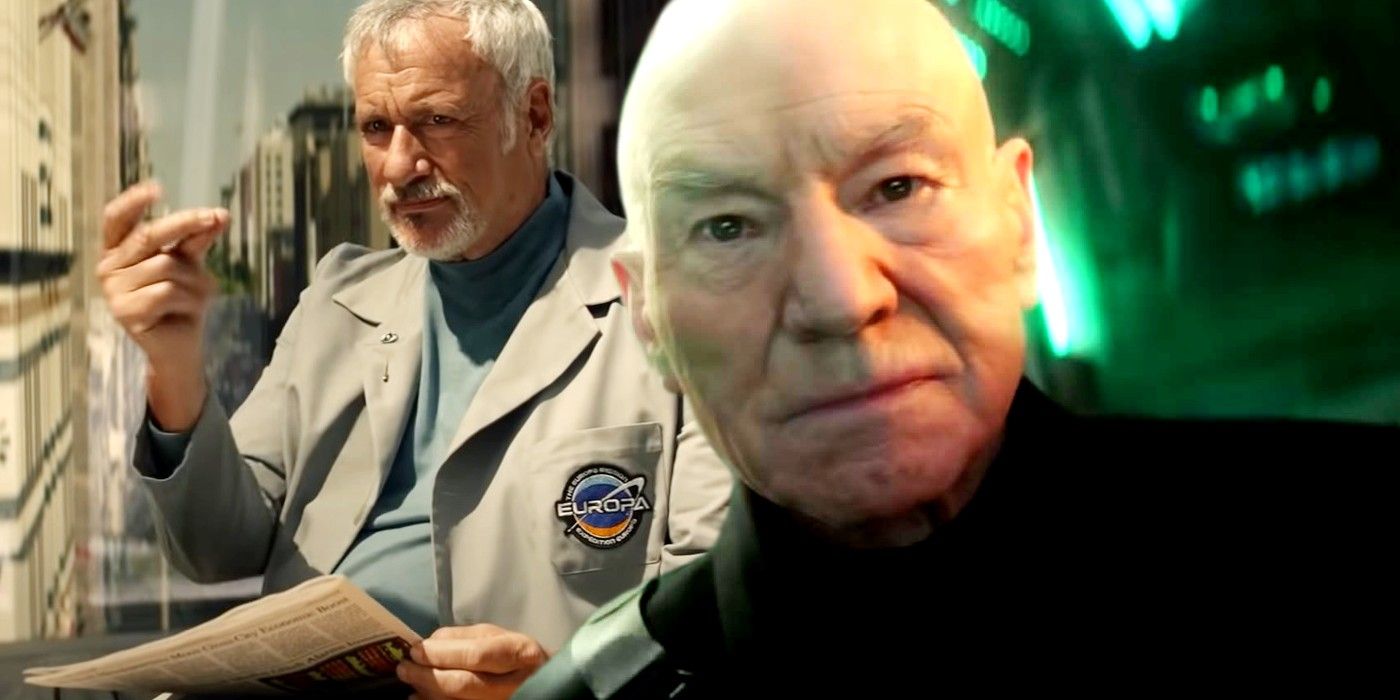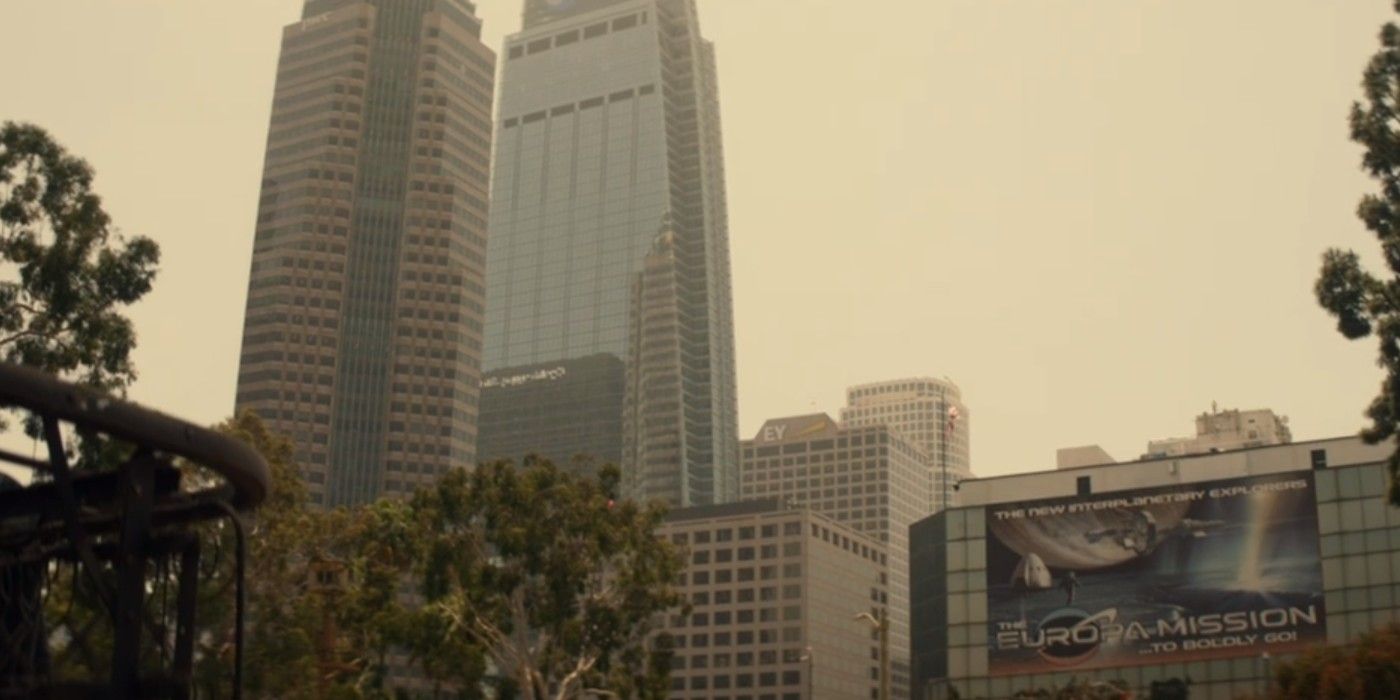Star Trek: Picard season 2's Europa Easter egg could hold a deeper significance in the grand tapestry of Q's time-twisting plan. The Star Trek timeline is all a kerfuffle and, as you might guess, Q is the omnipotent demigod to blame. In the name of "penance," Q has rewritten Star Trek history, turning the Federation's peaceful galaxy into a scary dystopia, where anyone with a pointy ear, a drop of green blood, or a cybernetic implant is considered lesser to the humans of Earth. Via the Borg Queen, Jean-Luc Picard knows that however Q altered history, it happened somewhere in 2024 Los Angeles.
In Star Trek: Picard season 2, episode 2, a holographic statue of an "Adam Soong" seemed to be our first clue in the mystery of how Q reshaped time. This predecessor of Noonian Soong (Data's creator) is revered by the evil Confederation regime, and can be heard repeating "human first" propaganda through his translucent form. We also see Q meeting Adam in the Star Trek: Picard season 2 trailer, which would seem to confirm Brent Spiner's latest addition to the Soong dynasty has some part to play in Q's reality reshoots.
Episode 3 drops an even bigger clue - the Europa mission. When Seven catches up with Raffi on the streets of Los Angeles, a huge billboard behind her reads, "The New Interplanetary Explorers - THE EUROPA MISSION - To Boldly Go!" Ignoring the shameless catchphrase reference, the billboard's placement denotes great significance to this early Earth space mission, and Raffi even describes the project as a "backdrop of hope." Europa mission advertisements are also plastered on LA buses seen in Star Trek: Picard's set photos and, most telling of all, season 2's trailer shows Q wearing a jacket with the Europa logo emblazoned on the breast pocket...
Although Star Trek: Picard hasn't revealed the exact nature of this space expedition just yet, the billboard in episode 3 points toward a manned mission to the Jupiter moon which, judging by Raffi's comments, paves the way for future exploration of the solar system, then the wider galaxy and the formation of Starfleet (Zefram Cochrane will develop warp travel in the 2060s, so they better hurry up). Star Trek: Picard's Europa mission is very probably inspired by real life events, as NASA will send its (unmanned, obviously) Europa Clipper probe to survey the Jupiter moon in - you guessed it - 2024.
Q's interference in the Europa mission explains why he specifically chooses 2024 as the timeline's point of divergence. NASA's real life mission, meanwhile, explains why Star Trek: Picard uses 2024 as its setting, rather than just plumping for the present day like most time travel stories would. Based on the heavy signposting in episode 3 and Q's disguise in trailer footage, John de Lancie's mischievous meddler will skew the outcome of Earth's Europa mission to the negative somehow, creating a domino effect that ultimately turns the Federation into the Confederation. If Adam Soong possesses anything like the genius of his descendants, he could feasibly be involved in the Europa expedition project - maybe Q convinces Soong to sabotage the mission, thus changing its impact upon Earth history.
If the Europa mission is how Q fouls up the Star Trek timeline, it's amazing Jean-Luc Picard's crew haven't figured this out. Raffi already acknowledged Europa as a symbol of hope, so as the gang ponder why Q would choose 2024 as his point of divergence, the giant billboard showing an important upcoming space mission might just be a good place to start?
Star Trek: Picard continues Thursdays on Paramount+.


